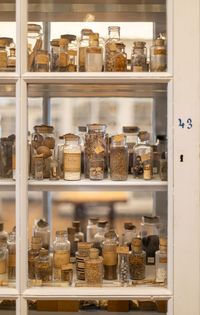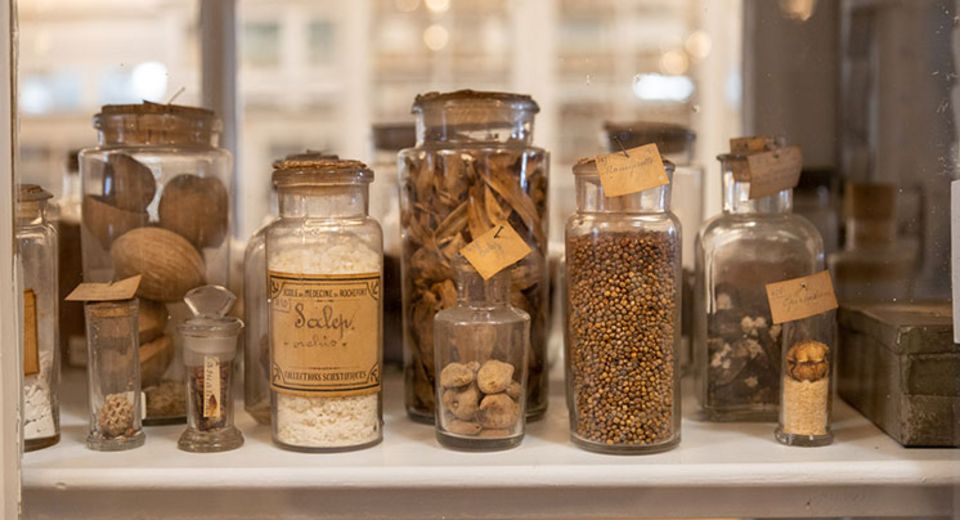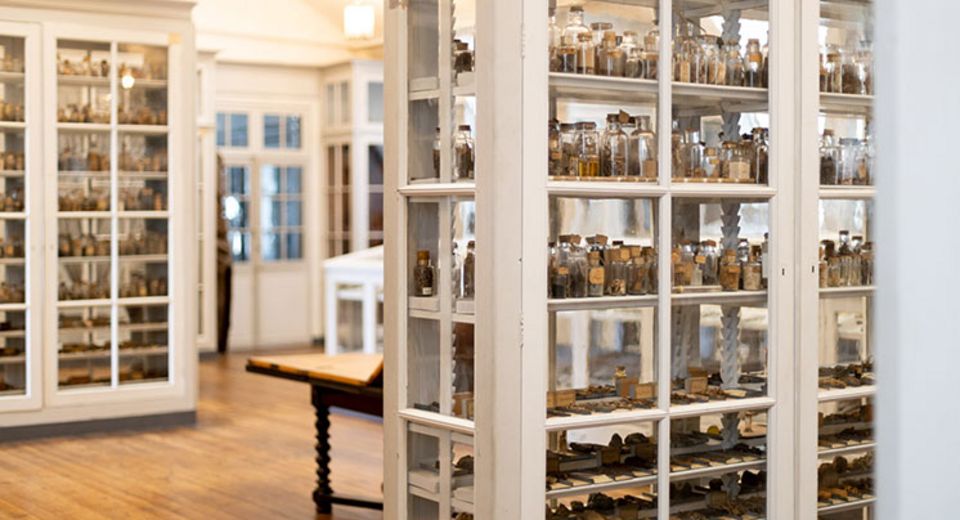The Naval Medical School’s crude drug collection
Rochefort - Ancienne école de médecine navale
Bearing witness to the Naval Medical School’s interest in pharmacology, the crude drug collection contains all the medicines used by the port’s pharmacist. It comprises several hundred vegetable and mineral samples conserved for their medicinal properties.
The Naval Medical School’s interest in pharmacology and botany
 Enlarge image : Close-up view
Enlarge image : Close-up view
The Naval Medical School’s interest in pharmacology is above all expressed by the existence of a crude drug collection containing several hundred vegetable and mineral samples conserved for their medicinal properties. In addition to samples of local plants, the two cabinets composing it also contain plants brought back by ship’s surgeons following their voyages across the world.
A first garden of medicinal plants
In 1697, 25 years before the Naval Medical School was founded, a medicinal plant garden was created at the Charente Hospital, on the initiative of the Naval Intendant Michel Bégon (1638-1710). The garden, which was entrusted to the port of Rochefort’s physician Antoine Gallot (1656-1712), included specimens of local flora along with plants brought back by maritime expeditions. The plants were used to manufacture pharmaceutical preparations for the Charente Hospital’s patients. This first garden did not survive Bégon’s death in 1710, but a new garden was inaugurated in 1741.
A new botanical garden for Rochefort
Following in the footsteps of Brest and Toulon, Rochefort provided itself with a new botanical garden in 1741. Since the early 18th century, the city had been one of the ports of arrival of exotic plants, coming in particular from the American colonies. The new garden, laid out in the heart of the shipyard and managed by the Naval Medical School, played a key role in training the school’s students in botany and pharmacology. Gaspard Cochon-Dupuy (1710-1788), the school’s second director, instigated an initial classification of the plants it contained, based on their medicinal properties and uses.
Today, the Naval Medical School’s crude drug collection bears witness to Rochefort’s botanical garden, which was destroyed in the late 19th century. It is also a reminder of another function common to shipyards’ gardens: the acclimatisation of exotic species from across the world.
Collection highlight
The essential works to see during your visit to the Musée national de la Marine in Brest, Port-Louis, Rochefort, Toulon, and soon in Paris.


